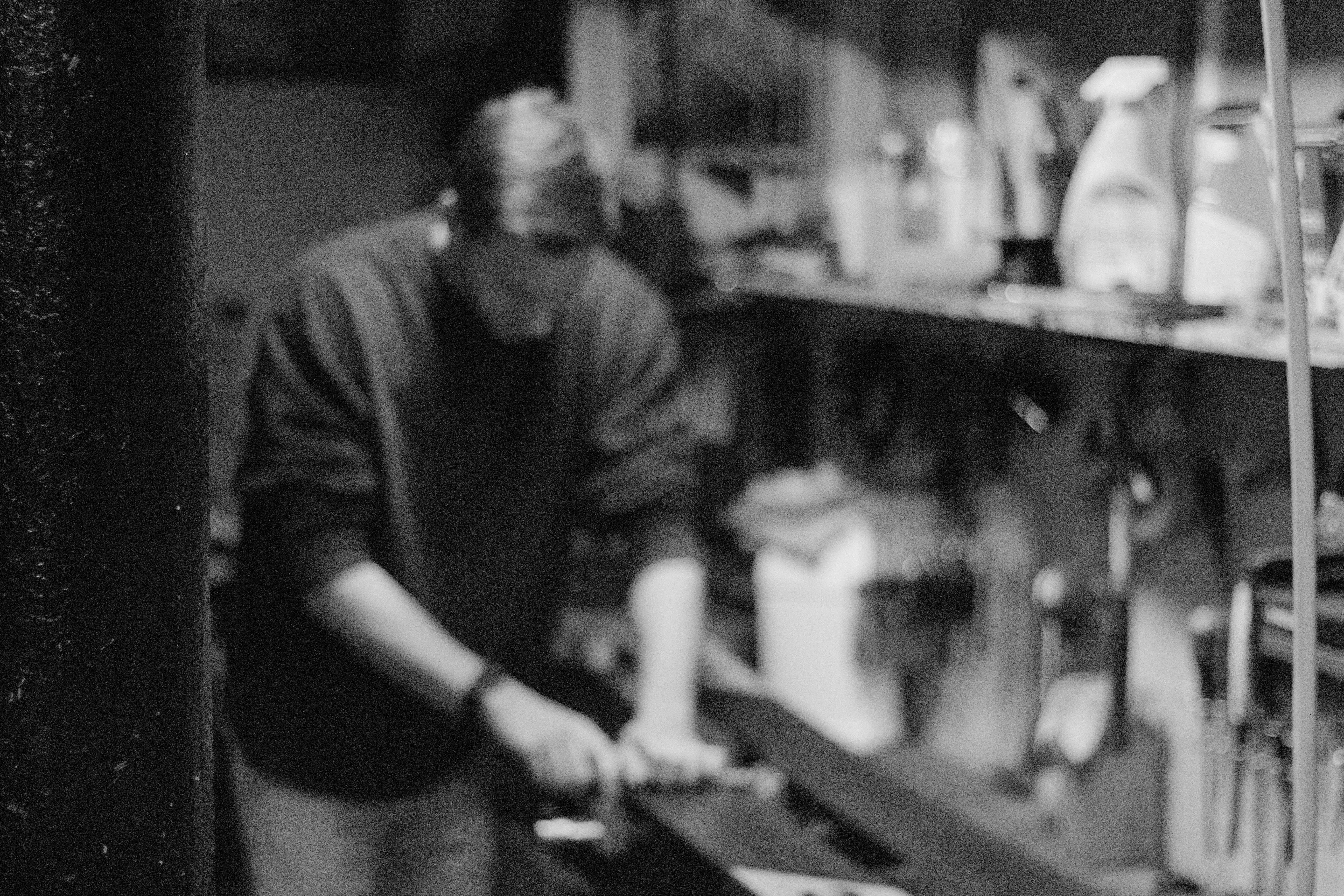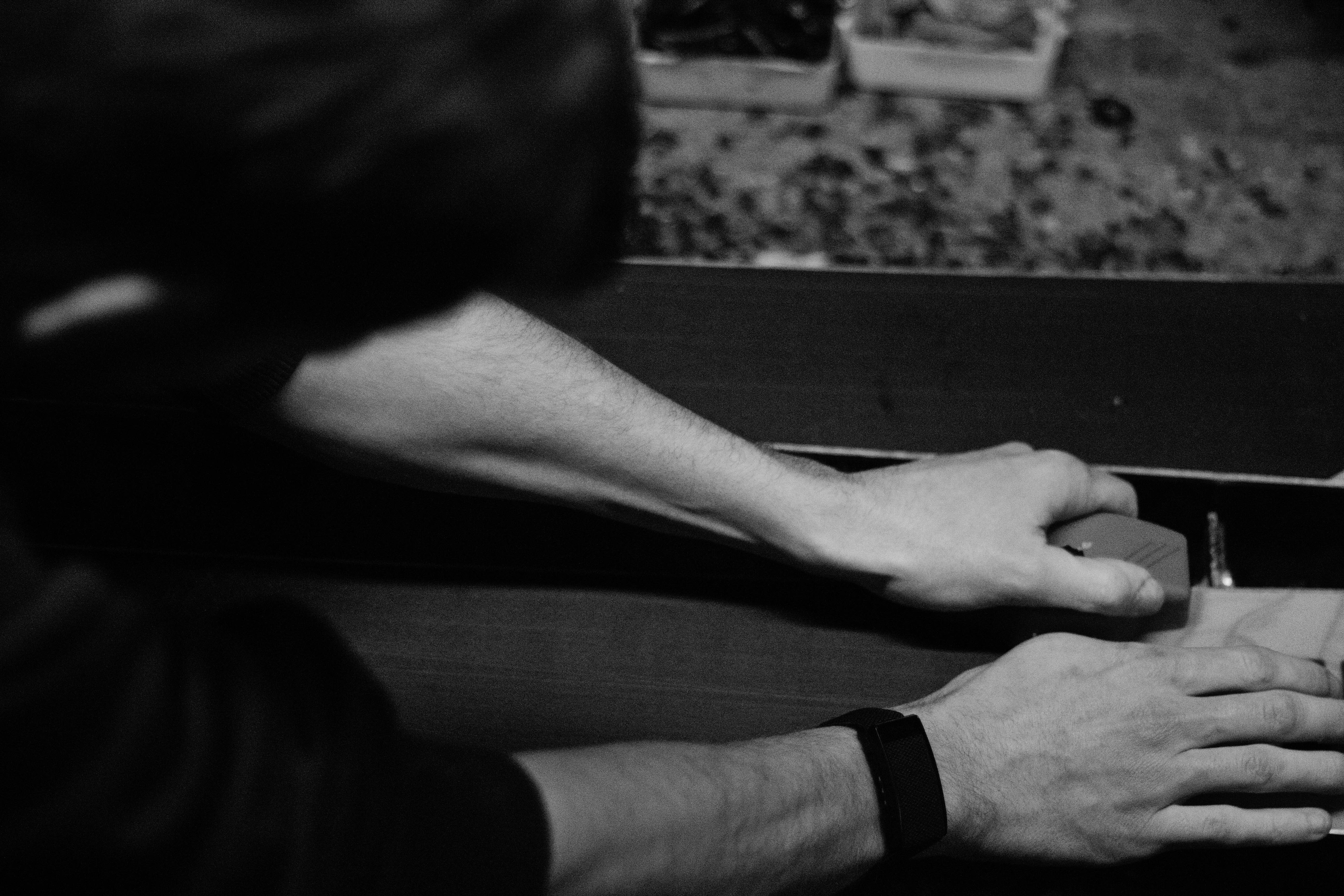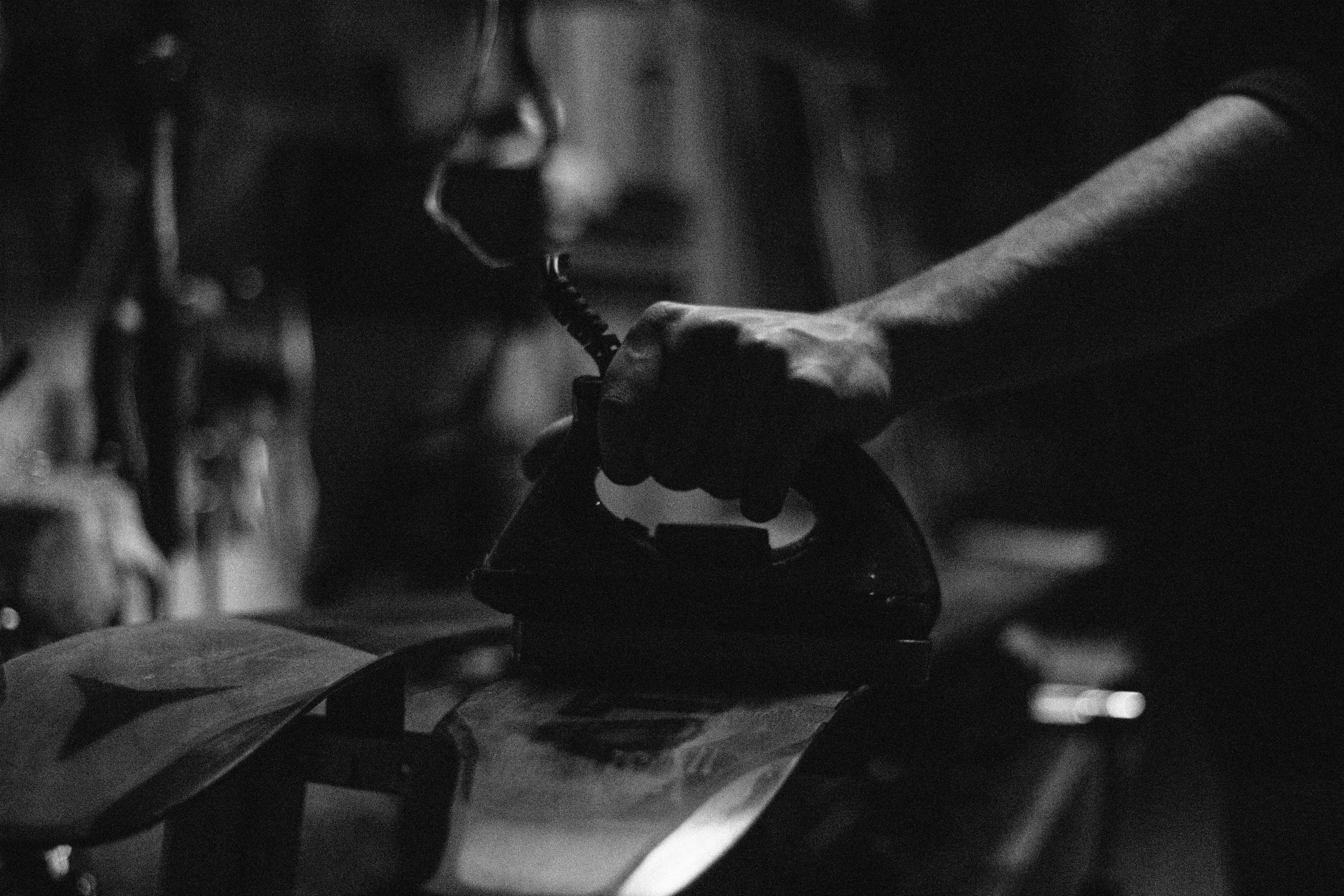Culture
Zen and the Art of Ski Maintenance
Prepare for Next Year's Turns with an Ode to the Summer Tune
The edge, my friend. That is all you need to worry about—the tiny sliver between doom and grace. That place at which a point is made, where two surfaces converge. For now, think only of that.
Think of the samurai, who kneels bent over whetstone, or the chef, whose arsenal of kitchen knives lies waiting to be revitalized. Just as they do, the process of maintaining skis should be viewed as ritual. An intimate and familiar practice. After all, it is true what’s been said by some: If you take care of your gear, your gear will take care of you.
FULL MATERIALS CHECKLIST:
– Table or bench (the waxing process gets dirty, try to set up where you don’t mind having a bit of a mess)
– Ski vise
– Skis
– Strong pair of rubber bands or string (to bind the ski brakes back)
– Base edge file
– Side edge tuner
– Gloves (Tuning scars don’t make for good bar talk)
– Poly sticks (aka P-tex)
– Metal grip or base weld material (different from P-tex and only necessary for core or edge damage)
– Chisel or steel scraper (to remove excess repair work)
– X-Acto knife or box cutter (to cut away excess or exposed material)
– Base cleaner or citrus cleaner (For cleaning prior to tune. Careful, this stuff is highly flammable)
– Wax (a basic universal wax will do)

ABOVE Welcome to the summer tune dojo. Photo: Charlie Leitner
A ski vise will be necessary to keep your skis in place during this process. You can get creative and make your own, or buy a set for anywhere from $70 to $150. A pair of strong rubber bands will also come in handy to bind the brakes back above the edge.
Now, run your thumb gently across the edge of your ski. Careful, they may look harmless, but if you’re not light with your touch, this metal will give you a painful tale to tell over the offseason. Try and measure the edge by feel alone. Notice any dents or burrs? Any pieces that need further mending? Run the back of your nail against the sharp end of the metal. Does it shave off any flakes? If it does, then your edges are plenty sharp and ready for wax.

ABOVE File’r down. Smoother than a fresh jar of skippy. Photo: Charlie Leitner
If not, grab your files and get to work. Slowly. Let the tools do the talking. Tip to tail until you’ve scraped the rust away and sharpened them to your liking.
Remember, the idea is to have your skis tuned and ready to go right out of the gate come next season. Hot to trot and ready to rock. Get some base cleaner to wipe them clean. You can buy base cleaner at any ski retailer, or use an all-purpose citrus cleaner like Super Orange from the hardware store.
Give any large wounds the treatment. Cut out any loose material with an X-Acto knife or box cutter, creating a smooth wall of base material so the P-tex holds firm. Use additional cleaner to clear loose particles from the gouges, but allow time for these cuts to dry before applying metal grip or P-tex.

ABOVE Big digger or wayward rock gauge, P-tex will make it all alright. Photo: Charlie Leitner
Once you’ve patched, scraped, and buffed, plug in your wax iron. As it heats, press pause and let the mind wander. Think of this winter’s season. Where did you find yourself? Were you knee-deep in buckets of powder? Do you have good stories to tell? Think of now. Think of then.
We are creatures of routine. Whether sporadic by nature or strictly regimented, all of us have developed our pattern of sorts. For most, any change in these routines will rightly lead to chaos. But, perhaps through willful diligence and our understanding of this reality of ritual, chaos can be controlled. A wonderful truth lies here: It is often not the end which matters, but the means.

ABOVE Don’t be shy, spread it on. Photo: Charlie Leitner
Check the iron. Anywhere from 130 to 140 degrees is good for melting and applying wax. Once it’s within range, have at it. Glob it on, my friend. Drip a hefty amount and spread it liberally. Get it dripping over the edges. You want to store your skis wax heavy, so the base doesn’t dry out over the summer and the edges don’t collect rust. You are the Madame Tussaud of the ski world. Admire your masterpiece.
Now, it’s time to lay your planks to rest. In a bag if you’ve got one. Off concrete if you can. Somewhere safe to hibernate through the offseason. Eventually, when it is time to scrape off the summer wax, you may give your skis a fresh coat. When winter returns, your bases will be well maintained, the edges sharp and good to go. For now, leave them tucked comfortably out of sight and dream of snow.
